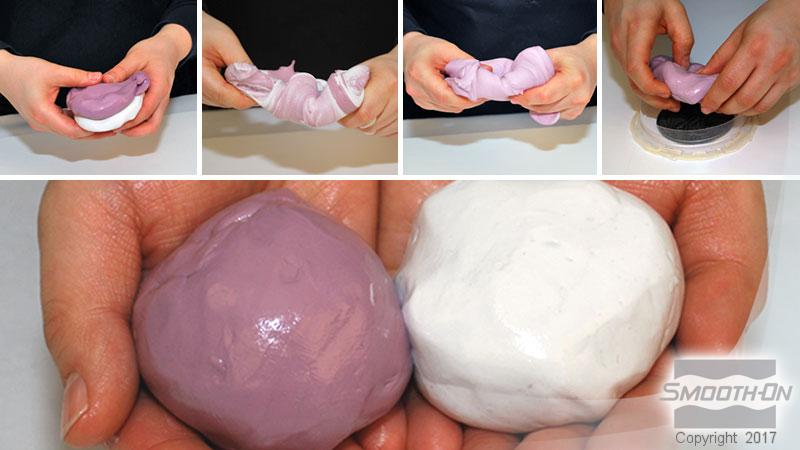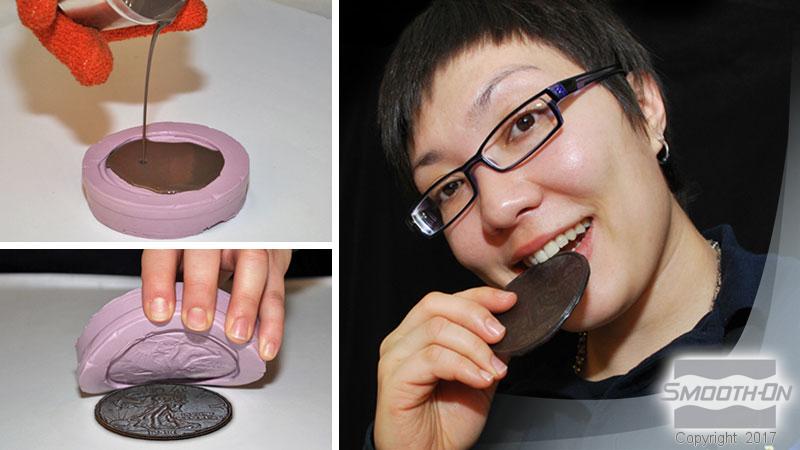Equinox™ 38 MEDIUM

Equinox™38操作时间约4分钟,固化时间约为30分钟。收缩率低,固化后橡胶特别坚固(非常高的拉伸强度)、耐用、耐高温(用于浇注低温熔点金属合金)。产品耐固化抑制。Equinox™有机硅食品安全,可用于烹饪应用场合。
应用包括从几乎任何表面制作纹理,矫形器/矫形外科,马蹄修复,珠宝制作等快速模具和更多。
说明
Store and use material at room temperature (73°F/23°C). Warmer temperatures will drastically reduce working time and cure time. Storing material at warmer temperatures will also reduce the usable shelf life of unused material. These products have a limited shelf life and should be used as soon as possible.
Cure Inhibition – Addition-cure silicone rubber may be inhibited by certain contaminants in or on the pattern to be molded resulting in tackiness at the pattern interface or a total lack of cure throughout the mold. Latex, tin-cure silicone, sulfur clays, certain wood surfaces, newly cast polyester, epoxy or urethane rubber may cause inhibition. If compatibility between the rubber and the surface is a concern, a small-scale test is recommended. Apply a small amount of rubber onto a non-critical area of the pattern. Inhibition has occurred if the rubber is gummy or uncured after the recommended cure time has passed.
Because no two applications are quite the same, a small test application to determine suitability for your project is recommended if performance of this material is in question.
To prevent inhibition, one or more coatings of a clear acrylic lacquer applied to the model surface is usually effective. Allow any sealer to thoroughly dry before applying rubber. Note: Even with a sealer, platinum silicones will not work with modeling clays containing heavy amounts of sulfur. Do a small scale test for compatibility before using on your project.
APPLYING A RELEASE AGENT - Although not usually necessary, a release agent will make demolding easier when pouring into or over most surfaces. Ease Release™ 200 is a proven release agent for making molds with silicone rubber. Mann Ease Release™ products are available from Smooth-On or your Smooth-On distributor.
IMPORTANT: To ensure thorough coverage, lightly brush the release agent with a soft brush over all surfaces of the model. Follow with a light mist coating and let the release agent dry for 30 minutes.
If there is any question about the effectiveness of a sealer/release agent combination, a small-scale test should be made on an identical surface for trial.
This product is mixed by hand. If you choose to wear gloves, wear vinyl gloves only. Latex gloves will inhibit the cure of the rubber.
Measuring - Equinox™ Series Putty comes as two parts. Dispense equal amounts (golf ball size, for example) of Part A and Part B. These products have a limited shelf life and should be used as soon as possible.
Mixing - Knead parts together aggressively to a uniform color and apply quickly.
Applying - Putty can be applied directly to almost any model surface (see preparation above).
Curing - Allow the rubber to cure at room temperature (73°F/23°C) before removing from model surface. Applying heat (heat gun, hair dryer, heat lamp, etc.) will cause the rubber to cure faster. Because no two applications are quite the same, a small test application to determine suitability for your project is recommended if performance of this material is in question.
Applying a Support Shell - Usually, Putty molds will be too thin to support themselves during casting. A support shell made of Plasti-Paste II™ or Matrix™ NEO™ and chopped fiber can be applied over the mold surface.
Curing / Post Curing - Allow rubber to cure as prescribed at room temperature (73°F/23°C) before demolding. Do not cure rubber where temperature is less than 65°F/18°C. Optional: Post curing the mold will aid in quickly attaining maximum physical and performance properties. After curing at room temperature, expose the rubber to 176°F/80°C for 2 hours and 212°F/100°C for one hour. Allow mold to cool to room temperature before using.
Using The Mold - When first cast, silicone rubber molds exhibit natural release characteristics. Depending on what is being cast into the mold, mold lubricity may be depleted over time and parts will begin to stick. No release agent is necessary when casting wax or gypsum. Applying a release agent such as Ease Release™ 200 (available from Smooth-On) prior to casting polyurethane, polyester and epoxy resins is recommended to prevent mold degradation.
Mold Performance & Storage - The physical life of the mold depends on how you use it (materials cast, frequency, etc.). Casting abrasive materials such as concrete can quickly erode mold detail, while casting non-abrasive materials (wax) will not affect mold detail. Before storing, the mold should be cleaned with a soap solution and wiped fully dry. Two part (or more) molds should be assembled. Molds should be stored on a level surface in a cool, dry environment.




